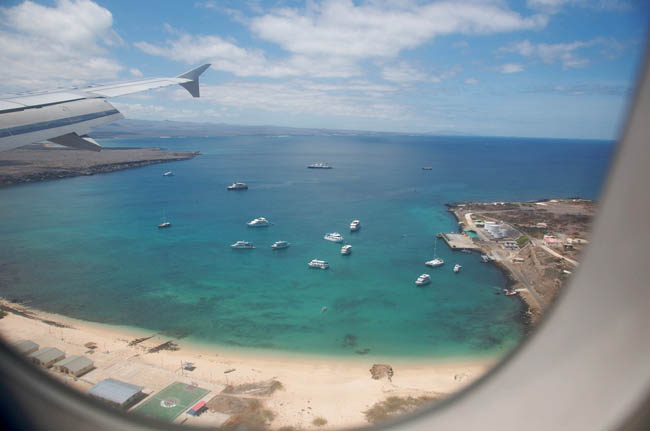Take a
trip to the fascinating Galapagos Islands off Ecuador’s coast

|
Beach
at Tortuga Negra, Isabela by Allan
Harris CC BY-ND 2.0
|
The
Galapagos Islands are a UNESCO World Heritage site, situated in the Pacific
Ocean around 1,000 km off the Ecuadorian coast. The archipelago of islands
and the surrounding huge marine reserve has been dubbed a unique "living
museum and showcase of evolution.”
It
is one of the richest marine ecosystems in the world due to its location
at the confluence of three ocean currents. The ongoing seismic and volcanic
activity in the area that formed the islands, along with the archipelago’s
extreme isolation, led to the development of unusual plant and animal life,
including many species like the giant tortoises, flightless cormorants,
marine iguanas, huge cacti and endemic trees, along with many different
subspecies of birds including mockingbirds and finches.
The
diversity of the ecosystem in the Galapagos Islands inspired Charles Darwin’s
theory of evolution by natural selection following his visit there back
in 1835.
Diving
in the Galapagos Marine Reserve
The marine
reserve of the Galapagos Islands is an underwater spectacle of abundant
marine life, with everything ranging from corals, to marine mammals, sharks
and penguins. This makes the islands a unique site to experience diving
with a huge diversity of marine life forms. These life forms are so familiar
with humans they even accompany divers while in the water.
Flora
and fauna in the Galapagos Islands
Ever since
Charles Darwin published “Voyage of the Beagle” back in 1839, the flora
and fauna of the islands have become well known, including the many finches,
mockingbirds, seabirds, marine iguanas, sea lions, giant tortoises, turtles,
land snails and many unique plant and insect groups.
Cruising
the Galapagos Islands
One of
the best ways to see the area is via a
cruise in the Galapagos. According to Nature Galapagos, there are several
options available from a budget boat to a high-end motor yacht, offering
the best in security and comfort while cruising around the islands for
a period of anything from four to eight days.
Getting
to the Galapagos Islands
Access
to the Galapagos Islands is via the airports on two of the islands, namely
Baltra (pictured below) and San Cristobal, where various commercial and
passenger planes fly in from continental Ecuador. There is a further airport
on Isabela Island, which is mostly limited to inter-island traffic. All
the inhabited islands have ports where they receive merchandise and supplies.
The
uninhabited islands in the Galapagos are strictly controlled and can only
be visited via carefully planned tourist itineraries, thereby limiting
visitation.
There
are around 30,000 people living in the Galapagos Islands on a regular basis
and the area receives approximately 170,000 tourists each year.

|
|
Baltra
Island Yacht basin by Alan
CC BY 2.0
|
2016 Ecuador
earthquakes in the news
While
Ecuador was subjected to earthquakes during April 2016, these fortunately
had no bad effects on the Galapagos Islands. According to a recent blog,
anyone planning a trip to Galapagos in and around April 2016 should not
be concerned, as all airports except that in Salinas are currently operating.
As
reported by Travel and Leisure, while there was a tsunami
alert at the time, this was lifted on Saturday, April 16 and all parks,
nature reserves and public tourism sites that were closed for 24 hours
for damage inspections are now open and available for visiting.
top
Ecuador
Travel Guide - Home - Travel
Blog


|

